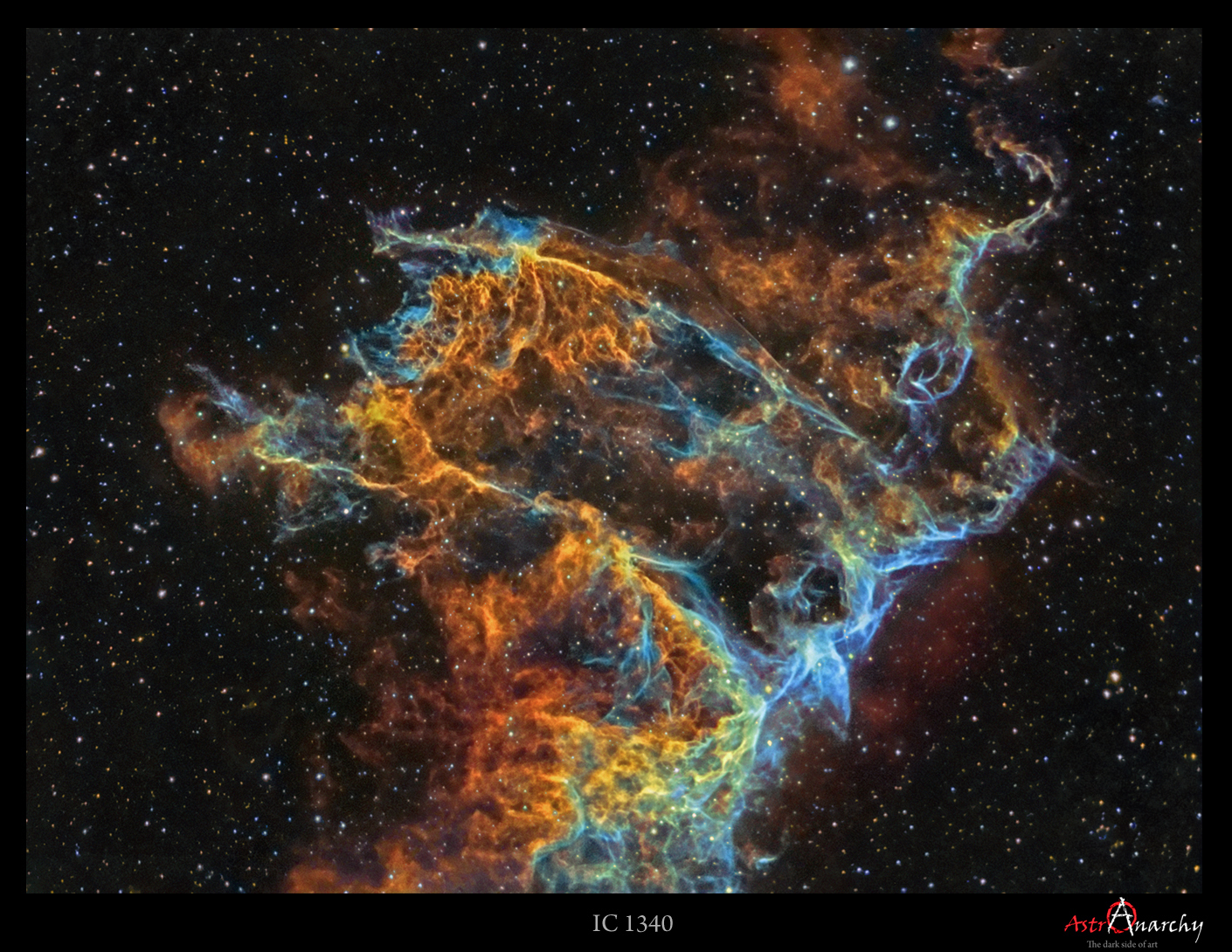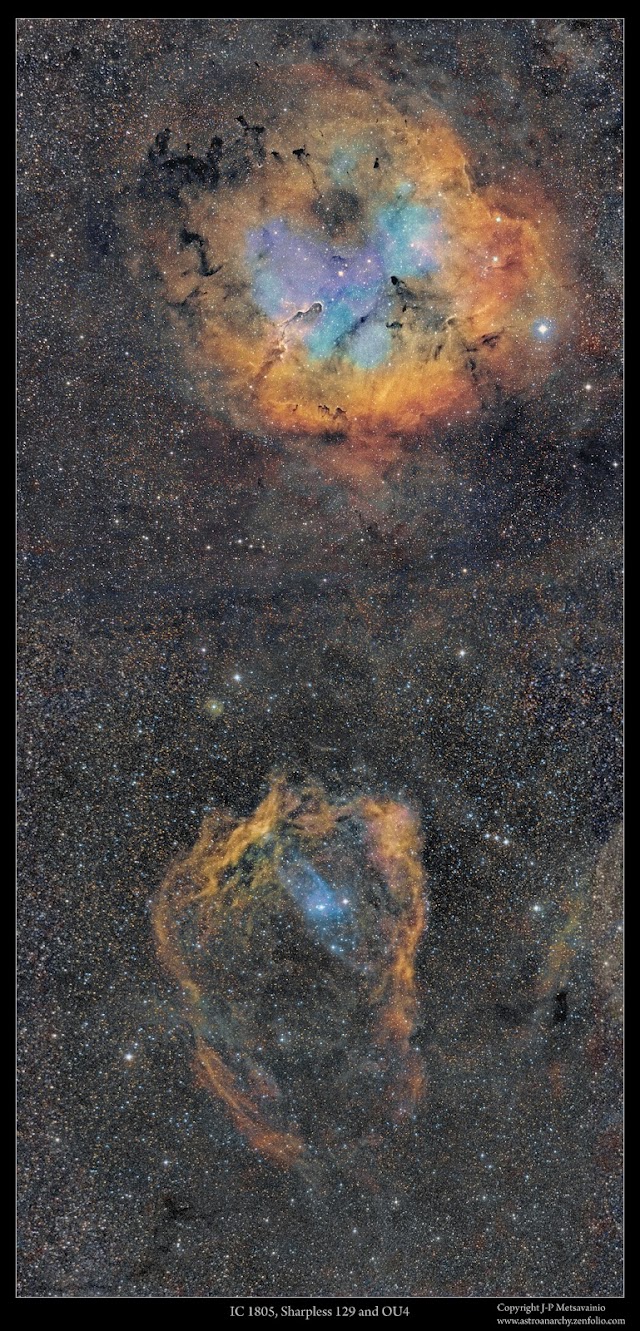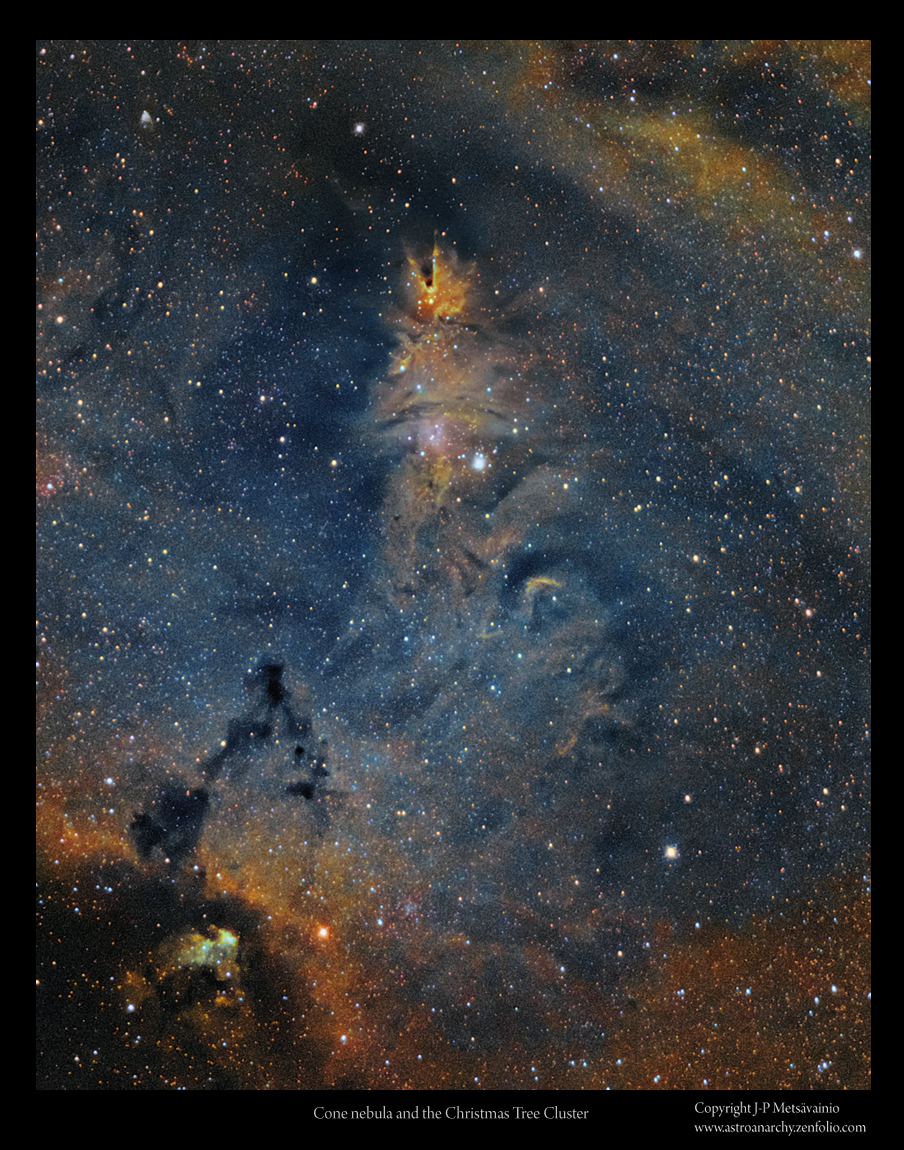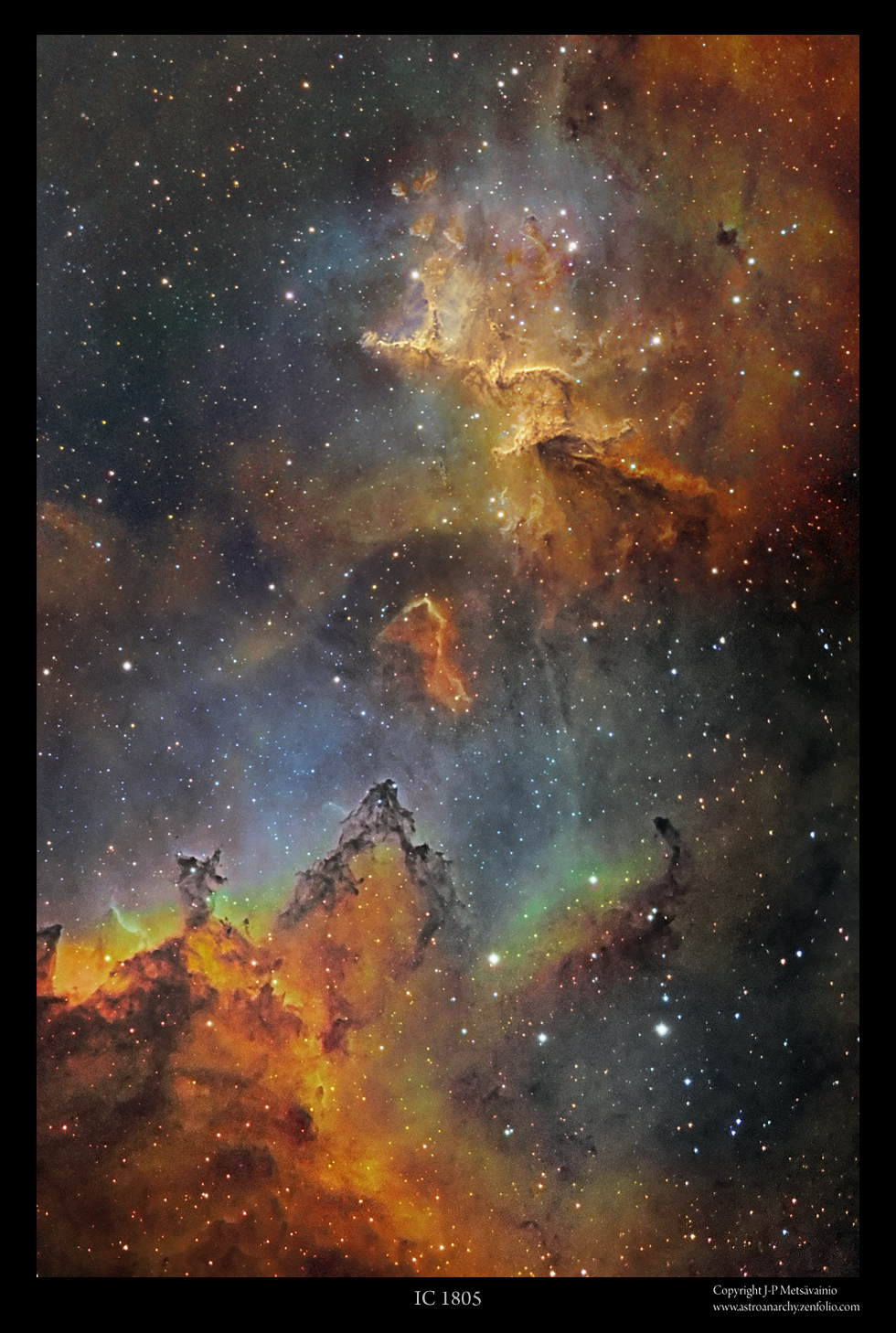COPYRIGHT, PLEASE NOTE
All the material on this website is copyrighted to J-P Metsavainio, if not otherwise stated. Any content on this website may not be reproduced without the author’s permission.
Have a visit in my portfolio
PORTFOLIO:https://astroanarchy.zenfolio.com/
Thursday, September 18, 2014
Astro Anarchy gets published
The winners of the Astronomy Photographer of the Year 2014 competition by the Royal Observatory Greenwich.
Over 2500 images from 51 countries participated this competition
Over 2500 images from 51 countries participated this competition
My image of IC 1340 wins the third place, "Highly Commended", in Deep space category
Daily Mail, news about the winners of Astronomy Photographer of the Year 2014 competition
My photo is a fourth from the top
http://www.dailymail.co.uk/sciencetech/article-2760574/Shimmering-green-aurora-total-eclipse-exploding-star-Winning-images-Astronomy-Photographer-Year-revealed.html
BBC news about the winners of Astronomy Photographer of the Year 2014 competition
My photo can be seen at 3:50 position in the movie of the winner images.
http://www.bbc.com/news/science-environment-29237571
My placed image of the IC 1340
Labels:
publications
Wednesday, September 17, 2014
Astronomy Photographer of the Year 2014
The winners of the Astronomy Photographer of the Year 2014 competition by the Royal Observatory Greenwich has been published today at 19.30 at UK time.
My image of IC 1340 wins the shared THIRD PLACE, "Highly Commended", in Deep space category
Over 2500 images from 51 countries participated this competition,
photos from best imagers, best tools and best locations around the world.
photos from best imagers, best tools and best locations around the world.
http://www.rmg.co.uk/whats-on/exhibitions/astronomy-photographer-of-the-year/2014-winners/deep-space
Winning images from all six categories:
My placed photo, IC 340, a detail of the Veil Nebula
A supernova remnant in constellation Cygnus
A detail image of the Veil Nebula supernova remnant. Angular size about the same as full Moon.
Technical details and other information about this photo
The original blog post of the IC 1340 from Autumn 2012, with a technical details:
http://astroanarchy.blogspot.fi/2012/10/ic-1340-project-finalized.html
This photo was taken with a kind of modest tool, an old Meade LX200 GPS 12" telescope:
http://www.astroanarchy.blogspot.fi/2012/09/my-equipment.html
The Meade telescope is not in use anymore:
http://www.astroanarchy.blogspot.fi/2014/01/its-over-i-cant-do-my-loved.html
(An advice! Don't buy any Meade equipments, they are generally very poor quality)
The new imaging system is under construction at the moment.
Location of the detail image in a wide field image
Area of interest marked as a white rectangle
Location of the Veil Nebula in constellation Cygnus
Veil Nebula at most left
All of my astronomical photos can be seen in my portfolio, please, have a look:
http://astroanarchy.zenfolio.com/
A supernova remnant in constellation Cygnus
A detail image of the Veil Nebula supernova remnant. Angular size about the same as full Moon.
Technical details and other information about this photo
The original blog post of the IC 1340 from Autumn 2012, with a technical details:
http://astroanarchy.blogspot.fi/2012/10/ic-1340-project-finalized.html
This photo was taken with a kind of modest tool, an old Meade LX200 GPS 12" telescope:
http://www.astroanarchy.blogspot.fi/2012/09/my-equipment.html
The Meade telescope is not in use anymore:
http://www.astroanarchy.blogspot.fi/2014/01/its-over-i-cant-do-my-loved.html
(An advice! Don't buy any Meade equipments, they are generally very poor quality)
The new imaging system is under construction at the moment.
Location of the detail image in a wide field image
Area of interest marked as a white rectangle
Location of the Veil Nebula in constellation Cygnus
Veil Nebula at most left
All of my astronomical photos can be seen in my portfolio, please, have a look:
http://astroanarchy.zenfolio.com/
Labels:
publications
Wednesday, August 27, 2014
IC 1896 reprocessed
The astronomical darkness hasn't arrived yet, up here 65N, and I don't have any equipments to continue my imaging work. Due to that, I have done some reprocessing of older material of mine. An other reason is to keep up my processing skills.
IC 1396
Click for a large image
R=Sulfur, G=Hydrogen and B=Oxygen
Technical data and more info can be seen HERE
A two frame mosaic image of IC 1396 with the Sharpless 129 and OU4, a planetary nebula candidate
A closeup of an Elephant's Trunk Nebula in IC 1396
Technical data and more info can be seen HERE
An experimental 3D-study of IC 1396 can be seen HERE
Naturally you can buy a museum quality photographic print from any of my images!
HERE is the portfolio with a shopping possibility.
Friday, August 22, 2014
35% discount from all of the photographic prints!
I have a portfolio for my astronomical images. You can buy museum quality photographic prints directly from the there,
http://astroanarchy.zenfolio.com/p1072219942
35% discount with the coupon code 334587 !
Just type the code when asked, while filling the order form, and you will see the final price with a discount.
NOTE!
This code will be valid between 22. - 29. August 2014
Friday, June 6, 2014
A collection of a starless Veil nebula shots
Sometimes I'm publishing experimental starless versions of my astronomical images. They'll show the actual nebula better and have a kind of mystique feel.
Human brains has a tendency to form some quasi logical shapes out of the cloud of random dots, like stars in this case. Without stars, the shapes in a gas cloud stands out much better.
A collection of Veil Nebula supernova remnant images without stars
The Veil Nebula supernova remnant in constellation Cygnus without stars.
Original image and information can be seen HERE
Closeup of the Eastern Veil, IC 1340
Original image and information can be seen HERE
IC 1340 in ionized Oxygen light, O-III
The Pickering's Triangle
Original image and information can be seen HERE
Pickering's Triangle in ionized Oxygen light, O-III
A closeup of the Eastern veil
Original image and information can be seen HERE
Eastern Veil in ionized Oxygen light, O-III
The Witch Broom Nebula
Original image and information can be seen HERE
Witch Broom Nebula in ionized Oxygen light, O-III
Veil Nebula supernova remnant with stars
Original image and information can be seen HERE
Labels:
research and development
Wednesday, May 28, 2014
Cone Nebula as an animated zoom in series
I have shot many targets with a several focal lengths and instruments.
Due to that, I'm able to publish some of my photos as an image set, with a different field of view and detail levels. The fractal nature of our universe stands out nicely by this way and it will make the orientation more easy.
Zooming into the Cone Nebula
An animated GIF, 3,4MB
The Cone Nebula and the Christmas Tree Cluster
More info about this image HERE
Buy a photographic print from HERE
Note. an apparent size of the Moon is marked as a circle.
Moon has an angular diameter of ~0,5 degrees, that's ~30 arc minutes.
Click for a large image
Labels:
animations
Saturday, May 24, 2014
North America Nebula, a zoom in animation
I have shot many targets with a several focal lengths and instruments.
Due to that, I'm able to publish some of my photos as an image set, with a different field of view and detail levels. The fractal nature of our universe stands out nicely by this way and it will make the orientation more easy.
An animated GIF, 3,4MB
Zooming into the North America Nebula, NGC 7000
A closeup of NGC 7000, the Great Wall
More info about this image HERE
Buy a photographic print from HERE
An animated 3D study of the North America Nebula can be seen HERE
A study about the apparent scale in the sky
Note. an apparent size of the Moon is marked as a circle.
Moon has an angular diameter of ~0,5 degrees, that's ~30 arc minutes.
Labels:
animations
Wednesday, May 21, 2014
An animated zoom in series to the Bubble Nebula
I have shot many targets with a several focal lengths and instruments.
Due to that, I'm able to publish some of my photos as an image set, with a different field of view and detail levels. The fractal nature of our universe stands out nicely by this way and it will make the orientation more easy.
An animated GIF, 3MB
Zooming into the Bubble Nebula
A closeup picture of the Bubble formation
More info about this image HERE
Buy a photographic print from HERE
An animated 3D study of the Bubble Nebula can be seen HERE
A study about the apparent scale in the sky
Note. an apparent size of the Moon is marked as a circle.
Moon has an angular diameter of ~0,5 degrees, that's ~30 arc minutes.
Click for a large image
Labels:
animations
Thursday, May 15, 2014
The largest Fine Art print in Finland
About three weeks ago I posted about my astronomical photo as a public artwork.
This very large, 10x3m, photographic print on aluminium was produced by a Finnish company Dialab.
They made an inquiry from the Finnish Museum of Photography about this print. The museum confirmed, that this is the largest photographic fine art print in Finland. The photo is located in main lobby of The "Oulu Region Joint Authority for Education" in Haukipudas
Cirrus of Cygnus
The largest fine art photo in Finland
The photo is printed on aluminium and it has a glossy finishing. This is the largest fine art print in Finland.
The size of the photographic prin is over 3 x 10 meters (= 10 x 33 feet) Even in that size, the image is very sharp, since the original image is in very high resolution due to mosaic technique used.
The size of the photographic prin is over 3 x 10 meters (= 10 x 33 feet) Even in that size, the image is very sharp, since the original image is in very high resolution due to mosaic technique used.
More info about the print and the image HERE
Labels:
publications
Monday, May 12, 2014
Cepheus, an animated zoom in series to the IC 1396
I have shot many targets with several focal lengths.
Due to that, I'm able to publish some of my material as an image sets, with different field of view and detail levels. The fractal nature of our universe stands out nicely by this way and it will make the orientation more easy.
An animated zoom in series to an Elephant's Trunk Nebula
An animated GIF, 2MB
A closeup picture of the Elephant's Trunk Nebula in IC 1396
More info and technical details HERE
Buy a photographic print from HERE
A study about the apparent scale in the sky
Note. an apparent size of the Moon is marked as a circle.
Moon has an angular diameter of ~0,5 degrees, that's ~30 arc minutes.
Click for a large image
Labels:
animations
Sunday, May 11, 2014
Heart Nebula, an animated zoom in series to the Melotte 15
I have shot many targets with several focal lengths.
Due to that, I'm able to publish some of my material as an image sets, with different field of view and detail levels.
The fractal nature of our universe stands out nicely by this way and it will make the orientation more easy.
An animated zoom in series to a Melotte 15 cluster
An animated GIF, 1,9MB
A closeup picture of Melotte 15 in the heart of the Heart Nebula
More info and the technical details HERE
Buy a photographic print from HERE
A collection of Heart Nebula images HERE
An experimental 3D-study of the Melotte 15
More animations and info can be seen HERE
A study about the apparent scale in the sky
Note. an apparent size of the Moon is marked as a circle.
Moon has an angular diameter of ~0,5 degrees, that's ~30 arc minutes.
Click for a large image
Labels:
animations
Friday, May 9, 2014
Simeis 147 supernova remnant in Taurus, with and without stars
Now and then I'm publishing some experimental material of mine. This time I made an animated image about Simeis 147 SNR in Taurus. In this animation, the supernova remnant can be seen with and without stars. Human brains has a tendency to form quasi shapes from a random cloud of dots, like stars in this case. This is a very effective method to show the actual nebula and its details.
I'm planning to use the star removal procedure to hunt down some old and very diffused planetary nebulae, located at a dense star field in the Milky Way. They might have a very large angular dimensions and the surface brightness is extremely low. Due to that, they get easily buried under a dense star field.
Simeis 147 (Sh2-240)
Stars vs Starless
Buy a photographic print from HERE
Buy a photographic print from HERE
Original image of the Simeis 147
More images and the technical details can be seen here:
PS.
You might know, that I lost my imaging setup at last January. Due to some serious electrical problems all the components are fried beyond any repair. Least it'll cost more than a new scope.
I haven't been able to find a corporate sponsors yet, for the new telescope and the mount. I do have couple of sponsors for the cameras though. I'll inform more about them later. Please contact, if you are interested to become a sponsor! astroanarchy (at) gmail.com
The sponsor will have lots of positive visibility for a many years.
The sponsor will have lots of positive visibility for a many years.
Some info about my work as an astronomical photographer
J-P Metsavainio
- Born 1964
- studies Art, Architecture, experienced in telecommunication manufacturing and development.
- Specialized in the astrophotography since 1998, I love to reveal some of the hidden beauty of the universe around us.
Some publications:
- Eight NASA APOD's at the moment (Astronomy Picture Of the Day)
- Many images in National Geographic image portfolio and several astronomical images of the week.
- Many images in the Science Photo Library archive in London
- The astronomer Phil Plait collected an annual list of the best astronomical images for the year 2012.
(My experimental image of IC 1396 was selected to this list. Nuber sixth from the top.) http://www.slate.com/articles/health_and_science/bad_astronomy/2012/12/best_astronomy_images_2012_see_the_most_beautiful_images_of_the_universe.html
- My photo of the constellation Cygnus was selected as one of the best amateur astronomy photographs of the past four years by the Daily Telegraph 2014.
http://www.telegraph.co.uk/science/picture-galleries/9622374/The-best-amateur-astronomy-photographs-of-the-past-four-years.html?frame=2374492
- Lots of publishing by many printed and online magazines, some logos are shown at top right corner here in my blog.
I'm also a regular speaker in astromical happenings like NEAIC New York (North East Astro Imaging Conference) and the European version of it CEDIC (Central european Deepsky Imaging Conference)
My photos
Image portfolio:
http://astroanarchy.zenfolio.com/
Blog, works mostly as an imaging diary and a publishing channel for some of my experimental work:
http://www.astroanarchy.blogspot.fi/
Facebook, I'm publishing only an astrophotography related materila here:
https://www.facebook.com/jp.metsavainio
Best regards and clear skies,
J-P Metsavainio, Astro Anarchy Observatory, Finland
Tuesday, April 29, 2014
My astroimages converted to 3D, a collection of movie clips
I have converted my astronomical images to a various 3D-formats. This time I made a video collection out of my experimental nebula 3D-models.
My astronomical images as an experimental 3D-conversionsThis is a looped 14 min video, click to start and stop. Original movie is in HD720p resolution.
Click the Youtube logo at lower right corner to see this video in Youtube.
Then, please, click the gear symbol, to see the video at 720p HD-format.
3D-stereo images from my astrophotos can be seen HERE
All my astronomical images can be seen HERE
How the 3D-models are done?
Due to enormous distances of cosmic objects, no real parallax can be imaged to get a 3D-information. I have developed a method to turn my images to a 3D-models.
Here is a short and simplified explanation, how 3D images are done:
My 3D-experiments are a mixture of scientific data, deduction and an artistic impression.
I collect distance and other useful scientific information before I do my 3d-conversion.
Usually there are known stars, coursing the ionization, so I can place them at right relative distance. If I know a distance to the nebula, I can finetune distances of the stars so, that right amount of stars are front and behind of the object. I use a "rule of thumb" method for stars, brighter is
closer, but if a real distance is know, I try to use it.
Many shapes can be figured out just by looking carefully the structures in nebula. Like dark nebulae must be at front of the emission ones to show. The general structure of many star forming regions are very same. There is a group of newly born stars, as an open cluster inside of the nebula. The stellar wind from the stars is then blowing the gas away around the cluster and forming a kind of gavitation, a hole, around it. The pillar like formations in the nebula must point to a source of stellar wind, for the same reason.
Since nebulae are practically transparent and the gas itself is emitting light, the thickness of the gas can be estimated by its brightness. Emission of ionized Oxygen, O-III, needs lots of energy. For that reason, Oxygen emission seen in the photo must be at close proximity of the ionizing star(s).
The processing workflow itself is kind of sculpting and the result is always an approximate reality.
I turned the original 2D-image to 3D by using a surface modeling software.
Image is first divided to layers by its content in a image processing software. Each layer is then projected to a 3D-surface. To build the 3D-surfaces and to have a good and realistic forms, I'm using a software, that converts the shades in the image to a 3D-form. I have semi automated the whole process, so it doesn't take too much time to make a 3D-conversion.
The nice thing about the final 3D-model is, that only image elements from the original 2D-image are used!
A typical surface model without textures
Labels:
animations
Subscribe to:
Posts (Atom)









































